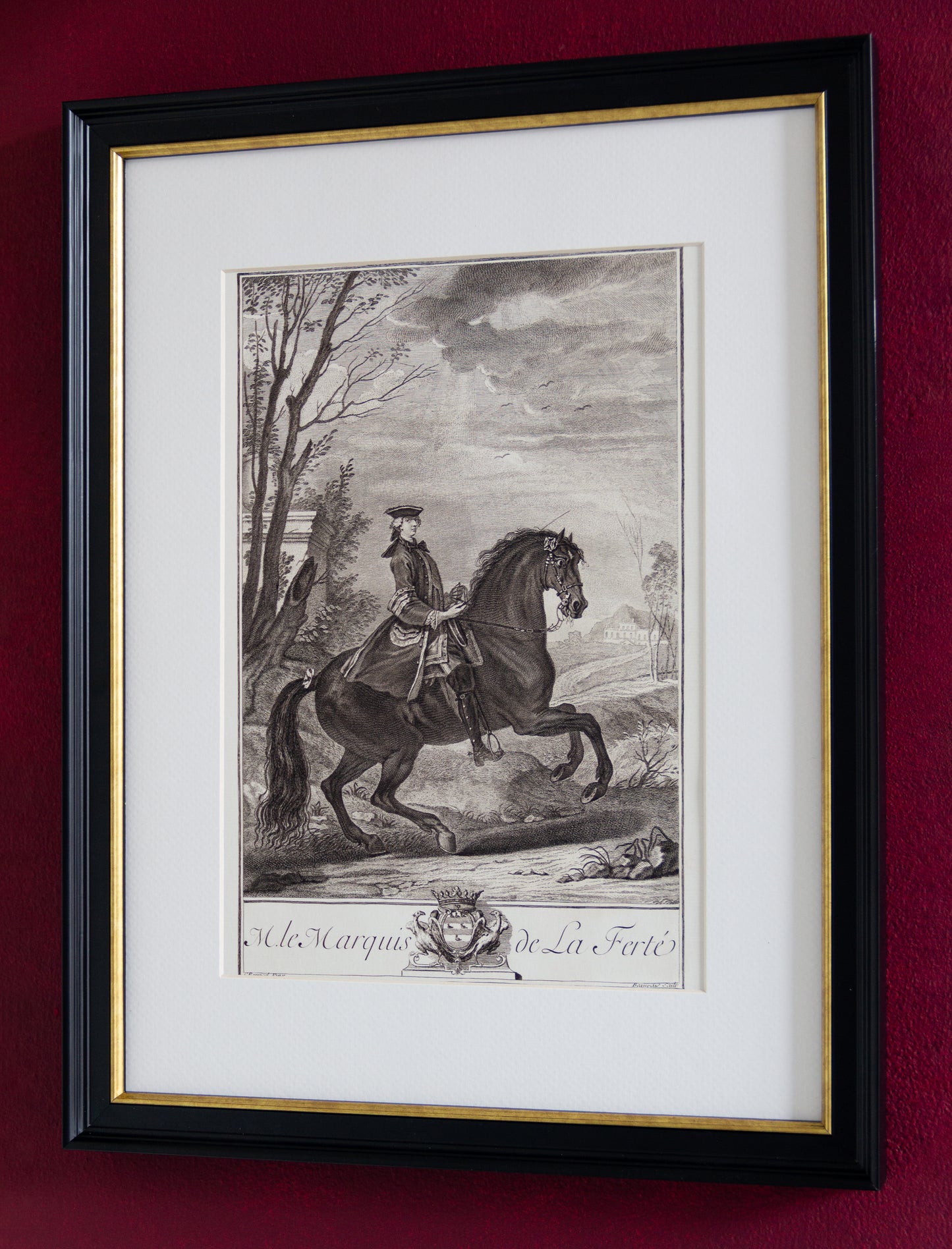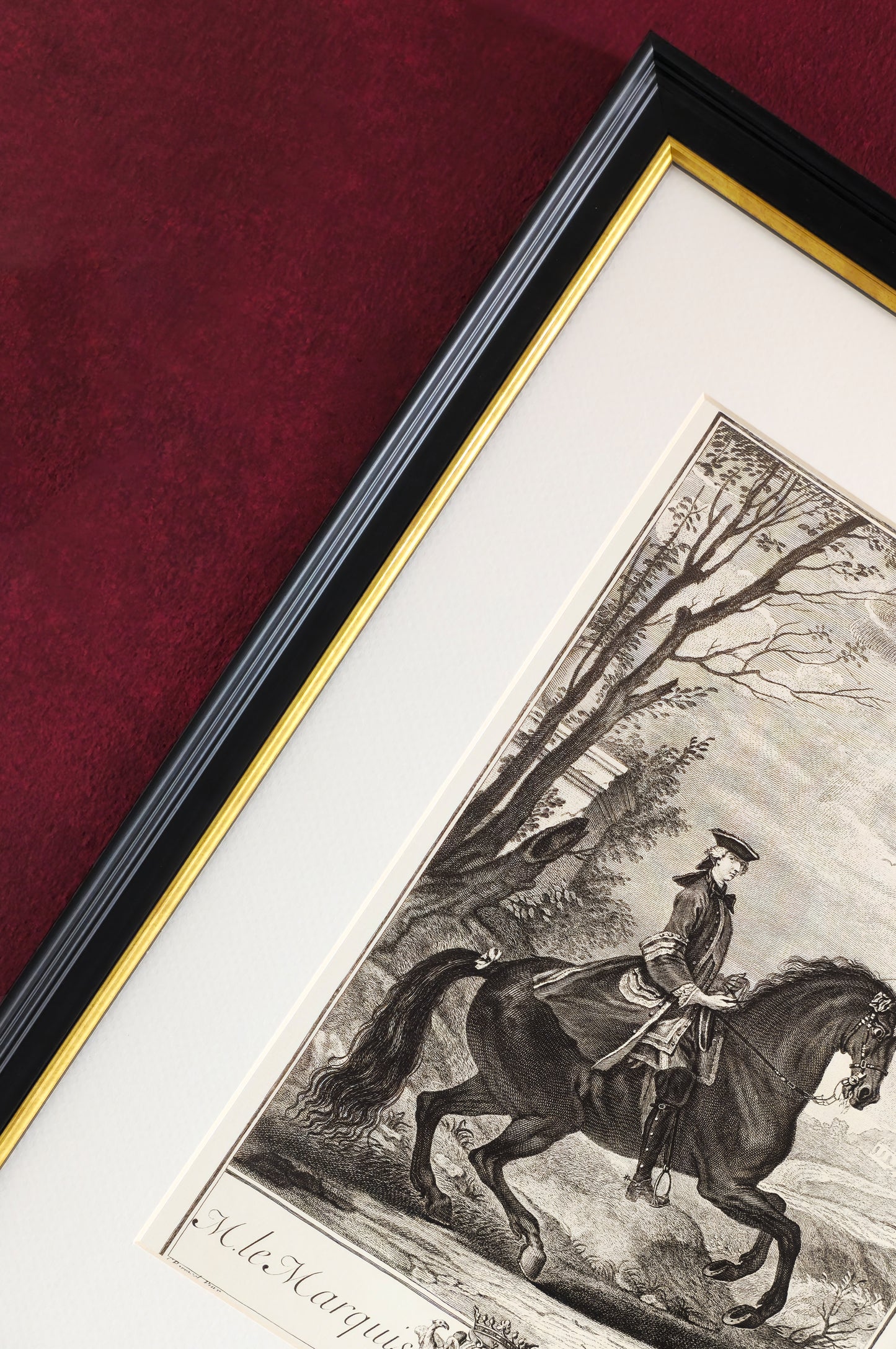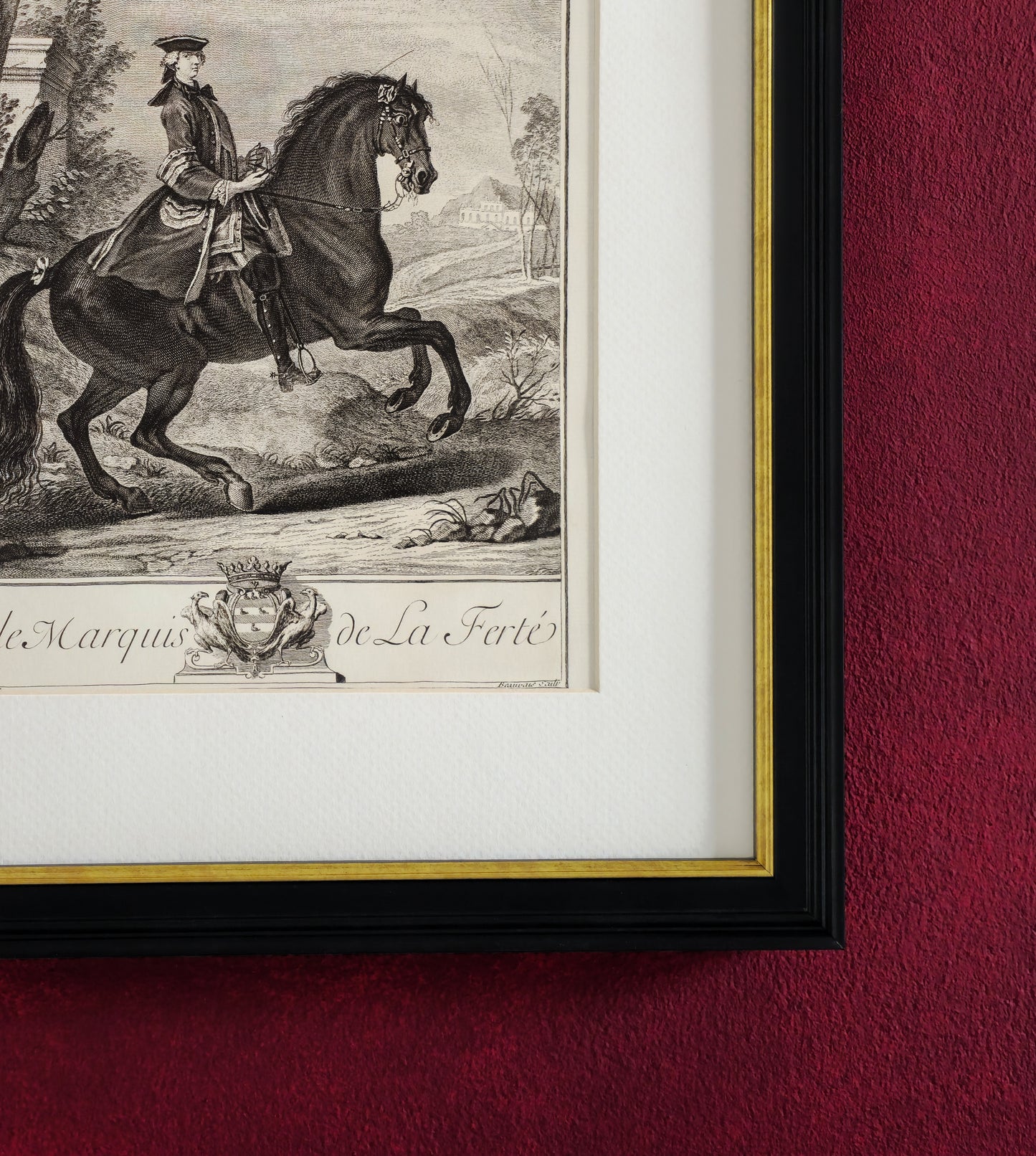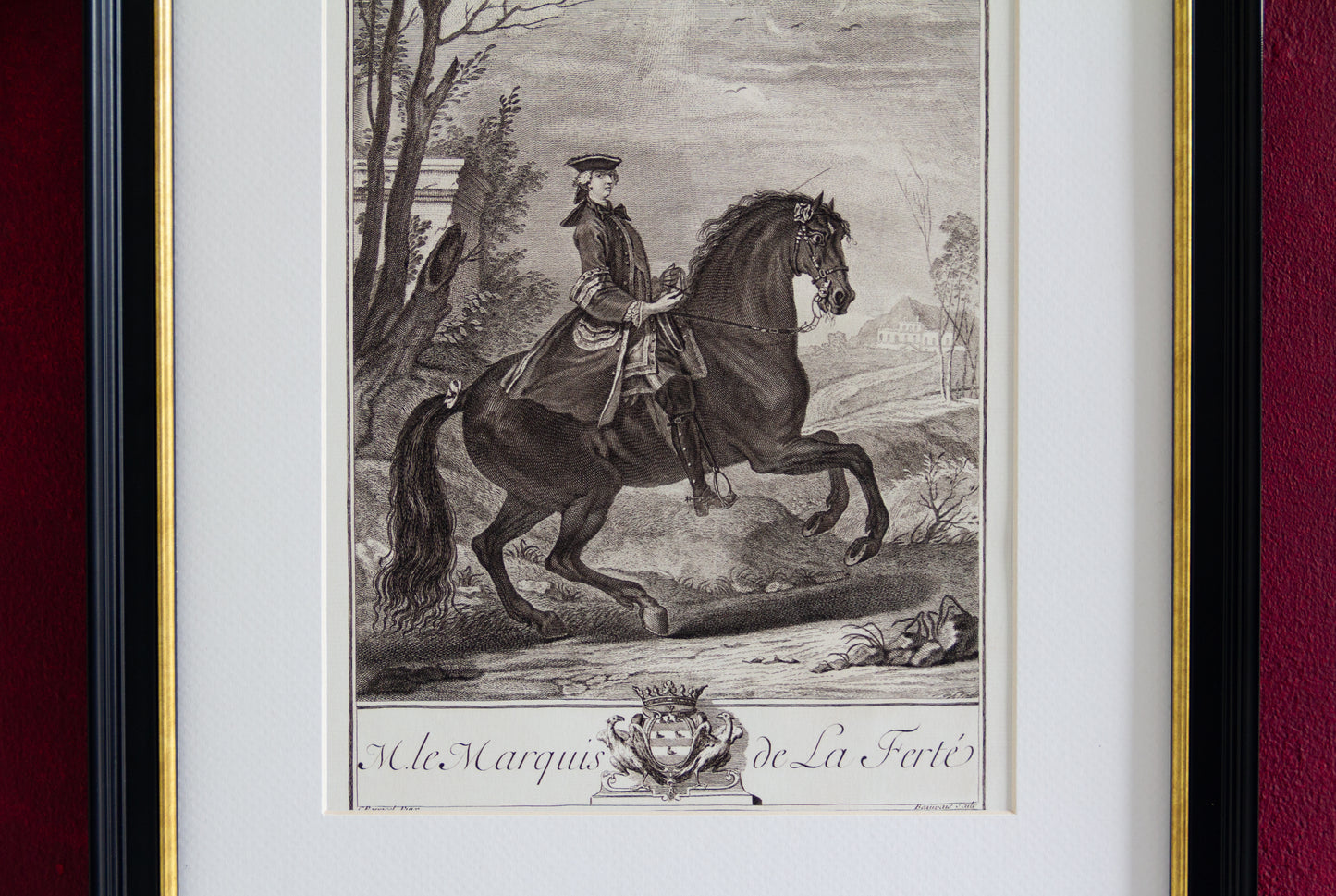De La Guérinière Print | The Canter
De La Guérinière Print | The Canter
The listed price is for the unframed fine art print only. Dimensions reflect the full size of the print, including any borders. The borders may appear larger or smaller than shown in product images, depending on the print size you select.
Couldn't load pickup availability
Print Quality & Materials
Print Quality & Materials
Expertly printed on luxurious 200gsm fine art paper with an elegant smooth finish, each piece is produced using a museum-grade giclée process. We use only the highest quality UV- or pigment-based inks, ensuring exceptional color depth and archival longevity: creating resistance to fading for over a century under suitable conditions.
Choosing the Right Size
Choosing the Right Size
We offer our prints in two size formats: inches and centimeters. If you’re in a region where inches are the framing standard (such as the US), we recommend selecting the inch-based sizes. For countries using the metric system, the centimeter variants are the best choice.
Our prints are designed to fit standard frame sizes, including those with or without a passe-partout (mat). For the most refined presentation, we recommend using a passe-partout, as it enhances the artwork’s visual impact.
Please note that for the common 20 x 29 cm passe-partout window, our A4 print size (21 x 29.7 cm) fits optimally.
For a 29 x 39 cm window, our 30 x 40 cm prints are the best choice.
Please note that some borders might be visible, based on the artwork. We design our products to accommodate to modern frames, but this is sometimes unavoidable based on the original dimensions of the artwork.
In the classical tradition, the galopade, or collected canter, was celebrated for its elegance, balance, and cadenced rhythm. As described by François Robichon de La Guérinière in L’École de Cavalerie, the movement should be fluid and united, with the forehand subtly shortened and the hind legs active and engaged. A horse in true galopade offers a light and poised motion. Its rhythm is so harmonious that it becomes, in de La Guérinière’s words, a delight to behold.
This engraving, like the movement it represents, is a study in controlled grace and timeless form. Executed with clarity and refinement, it captures not only the ideals of 18th-century horsemanship, but also the aristocratic culture from which such traditions emerged. A tribute to the galopade's enduring beauty, this print offers both visual pleasure and historical depth to their future owner.
More about the movement
More about the movement
According to the method of the time, the collected canter was introduced only after the horse had been thoroughly prepared through lateral work in trot. They also had to have developed lightness in both piaffe and passage, something that is quite foreign to us modern riders. De La Guérinière placed particular importance on cantering in shoulder-in to refine the positioning of the inside hind leg - a detail that highlights his deep understanding of biomechanics long before the term was popularized. He also insisted that the nature, conformation, and temperament of each horse must inform how the canter work is approached. This principle of individualization is still highly valued in classical training today.
More about the rider
More about the rider
The rider depicted here is not explicitly identified, but the coat of arms displayed corresponds to the noble family of de Beauvilliers. The figure may represent François de Beauvilliers, Baron of La Ferté (1608–1687), the grandson of Henri de La Ferté, Duke of Senneterre (1600–1681), or perhaps the third son of Paul de Beauvilliers — making him brother to the Count of St. Aignan and the Marquis of Beauvilliers, both of whom are featured elsewhere in this collection.





Unlock exclusive access to upcoming collections
Be among the select few to experience our newest collection before anyone else. You can sign up to our email list to receive exclusive updates and the chance to secure your pieces early.





